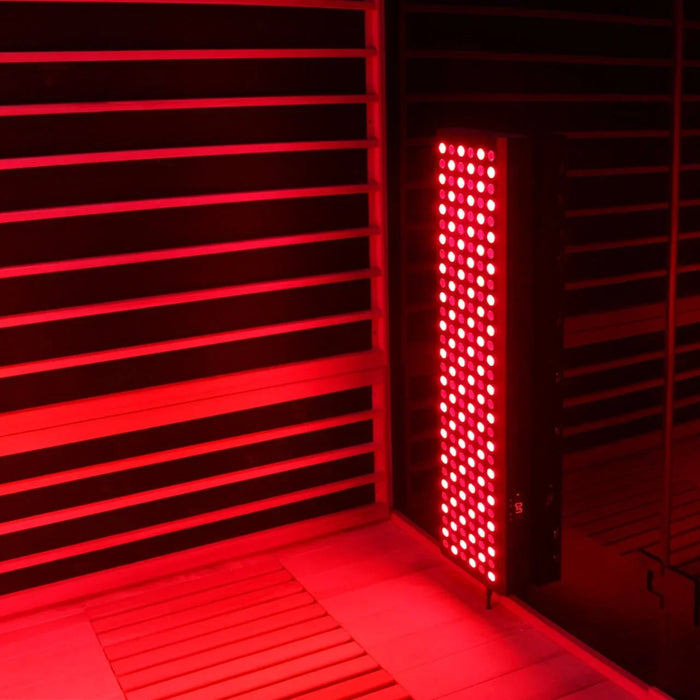Are you looking to harness the benefits of cold therapy right in your own home? Setting up a DIY cold plunge tub is easier than you might think. Whether you're new to cold plunges or a seasoned enthusiast, this guide will help you create the perfect setup for your needs. We'll cover everything from the materials you'll need to step-by-step instructions and recommended chillers to keep your water at the ideal temperature.
Let's jump in!
Materials Needed
Before you start, gather these essential materials:
-
Stock Tank or Tub: A sturdy stock tank is a popular choice for DIY cold plunges. Ensure it's large enough for you to fully submerge.
-
Insulation: To maintain cold temperatures, use foam boards or insulation wrap around the tub.
-
Plumbing Supplies: PVC pipes, fittings, and a submersible pump will help circulate the water.
-
Water Filtration: An in-line water filter keeps your plunge clean.
-
Chiller: Choose a chiller to maintain the water temperature (more on this later).
Step-by-Step Guide
-
Choose Your Location
Select a spot for your cold plunge tub. Ideally, this should be a shaded area to minimize heat exposure. Make sure there's access to power for your chiller and pump.
-
Prepare the Tub
Place the stock tank or tub in your chosen location. If you're using a stock tank, ensure it's on a level surface to avoid any instability.
-
Insulate the Tub
Use foam boards or insulation wrap around the outside of your tub. This helps to keep the water cold and reduces the workload on your chiller.
-
Set Up the Plumbing
-
Install the Pump: Place the submersible pump at the bottom of the tub. This will help circulate the water.
-
Attach PVC Pipes: Connect PVC pipes from the pump to your chiller. Make sure the connections are secure to avoid leaks.
-
Install the Water Filter: Position the in-line water filter within the PVC piping to keep the water clean.
-
Install the Chiller
Here’s where you can make your plunge truly effective. Consider one of these recommended chillers:
-
Fill the Tub
Once your setup is complete, fill the tub with water. Make sure the water level is high enough to cover your body when you’re sitting or lying in it.
-
Turn On the System
Power up your pump and chiller. Allow the system to run for a few hours to achieve your desired temperature. Regularly check for any leaks or issues in the setup.
-
Monitor and Maintain
Consistently monitor the water temperature and cleanliness. Regularly replace or clean the water filter and inspect the chiller for optimal performance.
Benefits of a Cold Plunge
Cold plunges offer numerous health benefits, including:
-
Reduced Inflammation: Cold exposure helps decrease inflammation and promotes faster recovery.
-
Improved Circulation: The shock of cold water can improve blood flow and circulation.
-
Enhanced Mental Clarity: Cold plunges can boost your mood and mental focus.
-
Better Sleep: Regular cold therapy may improve your sleep patterns.
Conclusion
Creating a DIY cold plunge tub at home is a fantastic way to enjoy the benefits of cold therapy without breaking the bank. With the right materials and a reliable chiller, you can maintain the perfect cold plunge environment. Whether you opt for the Penguin, Coldture, or Dynamic chiller, you're sure to have an effective and enjoyable setup.
Ready to take the plunge? Follow this guide and start reaping the benefits of cold therapy today!
FAQs
-
How cold should the water be in a cold plunge tub? Ideally, the water temperature should be between 50°F and 59°F, but advanced chillers can lower it to 37°F for a more intense experience.
-
How long should I stay in a cold plunge? Start with short durations of 1-2 minutes and gradually increase to 5-10 minutes as your body adapts.
-
Can I use a cold plunge tub indoors? Yes, with proper insulation and a reliable chiller, an indoor setup can be very effective.
-
How do I keep the water clean? Use an in-line water filter and regularly check and replace it. Clean the tub periodically to prevent algae and bacteria buildup.





Leave a comment